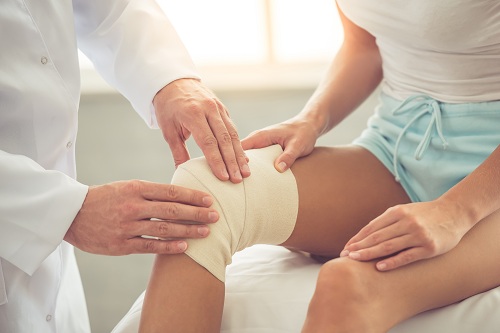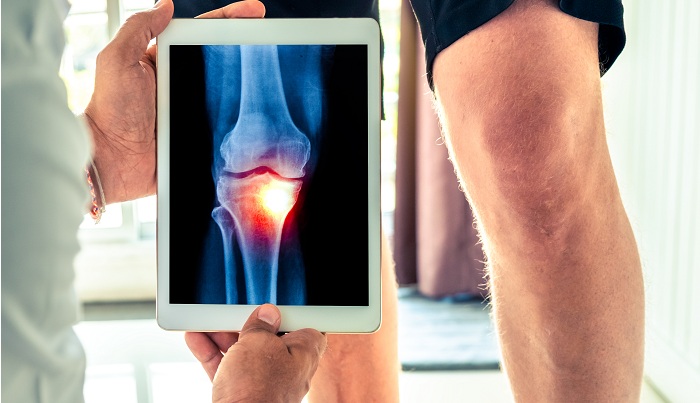Knee problems, like arthritis, can cause debilitating signs and symptoms. These manifestations can significantly affect a patient’s way of life, including their usual routines, social life, family life, and other aspects of health.
If the signs and symptoms are not manageable anymore, doctors highly recommend patients with knee problems to undergo knee surgery, such as knee replacement, which you can learn in detail below and what you can read on this website.
Below are signs that you should get a knee replacement.
-
Recurring or Persisting Knee Pain
Knee pain that recurs or persists over time and during and after workout or training exercise may be considered signs that you have a serious knee problem that would likely require knee surgery, such as knee replacement.
It really is important for anyone who has had pain in their knees in the past to consider what might be causing it. By doing this, they’ll know what things to look for when they’re thinking about getting knee surgery.
-
Cannot Move Without Restrictions
Restricted mobility means that you’re no longer as mobile as you would like to be or cannot perform activities as you used to be. Hence, another factor that’ll determine if you require knee surgery is the level of mobility that you have with regards to your knee.
-
Worsening Arthritis
Osteoarthritis is one of the more common knee problems you can have and affects the area where the bones join together. The reason that this happens is that the cartilage that cushions your knee has started to wear away due to the stress it’s under from the way you move. This means that as you age the cartilage is less capable to handle this impact. As a result, you can suffer some serious pain.
One of the other most common knee problems is patellofemoral hyperplasia, which means that the bones of the kneecap are being developed in a way that causes the joint to be wider than normal. It’s quite common to see people in their 70s or even older suffering from patellofemoral hyperplasia, and this often means that they’re in pain as a result of having wider joints and increased friction with the ground.
-
Non-Surgical Interventions Are Ineffective
Here are the non-surgical interventions for knee problems:
- Over-the-counter (OTC) or Prescription Pain Medications: There are many pain medications on the market today, such as aspirin, ibuprofen, and other non-steroidal anti-inflammatory drugs that people take every day to relieve the symptoms of knee problems, like arthritis. In addition, acetaminophen is also a common pain reliever for knee problems. Other common pain medications are muscle relaxants and over the counter and prescription pain relievers such as naproxen, acetaminophen, and Tylenol.
- Physiotherapy: One of the most common ways to relieve knee pain is with physiotherapy. This involves using a combination of exercises, stretching, and massage to help the affected area heal and keep it limber. One of the benefits of physiotherapy is that it helps rebuild cartilage.
If you’re experiencing pain after physiotherapy or your condition is not improving even with pain medications, then your doctor may recommend surgery. Also, the same is true when using an orthopedic brace, a cane, or other assistive devices are not helping you anymore.
-
Difficult To Manage Knee Stiffness
Your doctor would likely recommend you to undergo knee replacement if you always struggle with knee pain and stiffness even when you’re doing simple activities, such as sitting in a car or in a movie theater.
-
Knee Pain Affecting Normal Routine
If your knee pain already greatly affects your life, such as disrupting your normal daily routine, you have to consult your doctor and consider undergoing knee surgery.
Severe pain may disrupt your sleep, gardening, your focus driving, and other normal routines you may have. Also, knee pain may get severe during the cold season, like rainy weather and in winter.
-
Decrease Range Of Motion
When you feel a significant decrease in your knee’s range of motion (the degree you’re able to bend your knee), then it may be a sign that you’ll need knee surgery. Some people who underwent surgery find that they have found relief fairly quickly
The surgery is will often be a minor procedure and will take care of the damage that was done. In many cases, the person will be asked to wear a splint so that they’re able to move around a bit while the surgeon works on repairing the joint.
You’ll likely be able to go back to your normal activities a short time after the surgery is performed. In order to see if there are any long-term issues that can be handled after this procedure, it’s a good idea to consult a doctor or an orthopedist.
-
Grating Joint
Crepitus is described as any grinding, grating, creaking, crunching, popping, or cracking noise that’s heard when moving a joint.
Osteoarthritis surgery, which is a form of knee surgery, may be used to repair bursitis in the knee that occurs when the bones of the joint start rubbing against each other causing pain and crepitus. This surgery is used to correct a range of conditions in the joint of the knee.

Understanding Knee Replacement Surgery
Knee replacement surgery is the most common procedure that can be done for people who have suffered from knee joint injuries. As mentioned above, if a person is unable to control the knee joint pain and if the joint is no longer able to perform normal activities, the doctor may decide knee replacement surgery to help the patient regain full use of their legs and feet.
Here’s some good-to-know info about knee replacement surgery:
- Knee replacement involves the surgical opening of both the femoral and the patellar tendon (knee cap) in order to create a strong new attachment to the thighbone. This new attachment is called the meniscus, and it’s what the surgeon uses to keep the knee joint from moving around and to take the pressure off the joint.
- A meniscus tear, which may be caused by infection, trauma, or muscle spasms, is the most common injury of the knee joint, which can be very painful. The knee will either experience pain or stiffness in the first few days after the surgery. Some people have also experienced swelling and redness at the side of the knee. The symptoms may subside after a couple of weeks.
- After you’ve had surgery, you need to follow a treatment plan in order to avoid complications. A brace is often used as soon as possible after the operation, but other types of braces may be prescribed after a few days, depending on the severity of the meniscus tear. It’s recommended to wear a brace for at least six weeks in order to reduce the chances of the problem recurring.
- If the treatment plan doesn’t work, the doctor may recommend the replacement of your meniscus with the addition of bone grafts. The addition of bone grafts to replace the lost part of your meniscus is called a meniscoplasty.
Another procedure that can be done is the insertion of an arthroscope to get a better view of the damaged area and to see the damage in your cartilage.
- In some cases, the doctor may also recommend a joint massage in order to increase the amount of flexibility in your knee. This will help strengthen the knee joint and it may also reduce the stiffness.
- You’ll also be advised to keep a close watch on your diet, exercise routine, and any other activity during the recovery period. These steps will help speed up the healing process and you’ll find that your pain will be significantly reduced.
Different treatment options will be needed according to your age and medical history, so you should talk to your doctor about all these options before you make your decision. Your doctor will be able to give you more information about these options and the treatment options that may be available to you.
Your doctor will discuss the surgery with you so you’ll be aware of any risks associated with the surgery and of any other possible treatments as well. If you decide to go ahead with the surgery, it’s also best to ask your doctor about all the benefits and risks that are involved and the possible complications that you may encounter during the recovery process.
Conclusion
Knee surgery is an option for those who are dealing with pain in their knees. Many times, people don’t realize that surgery is often a great thing to do when they have a knee issue.
The biggest sign that you should get knee surgery is anything related to arthritis. Swollen joints and knee pain can be debilitating, causing disruption in your normal activities. If this happens, your doctor may consider a knee surgery procedure done.


















